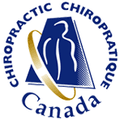Diagnostic Guidelines
 Differential diagnostics are common place among evidence-based chiropractors today. Under this umbrella there are a multitude of well tested and proven diagnostic protocols, as well as many systems of much more questionable conventions. In this section I will present and discuss many of those popular diagnostic systems.
Differential diagnostics are common place among evidence-based chiropractors today. Under this umbrella there are a multitude of well tested and proven diagnostic protocols, as well as many systems of much more questionable conventions. In this section I will present and discuss many of those popular diagnostic systems.
Essential LITERATURE
![]() DO PARTICIPANTS WITH LOW BACK PAIN WHO RESPOND TO SPINAL MANIPULATIVE THERAPY DIFFER BIOMECHANICALLY FROM NONRESPONDERS, UNTREATED CONTROLS OR ASYMPTOMATIC CONTROLS?
DO PARTICIPANTS WITH LOW BACK PAIN WHO RESPOND TO SPINAL MANIPULATIVE THERAPY DIFFER BIOMECHANICALLY FROM NONRESPONDERS, UNTREATED CONTROLS OR ASYMPTOMATIC CONTROLS?
Wong et.al 2015
Conclusion:
Those reporting post-SMT improvement in disability demonstrated simultaneous changes between self-reported and objective measures of spinal function. This coherence did not exist for asymptomatic controls or no-treatment controls. These data imply that SMT impacts biomechanical characteristics within SMT responders not present in all patients with LBP. This work provides a foundation to investigate the heterogeneous nature of LBP, mechanisms underlying differential therapeutic response, and the biomechanical and imaging characteristics defining responders at baseline.
 An Evidence Based Clinical Guideline For The Diagnosis & Treatment Of Lumbar Disc Herniation With Radiculopathy
An Evidence Based Clinical Guideline For The Diagnosis & Treatment Of Lumbar Disc Herniation With Radiculopathy
Scott Kreiner et al. 2014
Conclusion:
A clinical guideline for the care of patients with symptomatic lumbar disc herniation has been created using the techniques of evidence-based medicine and using the best available evidence as a tool to aid practitioners involved with the care of this condition
 We can tell where it hurts, but can we tell where the pain is coming from or where we should manipulate
We can tell where it hurts, but can we tell where the pain is coming from or where we should manipulate
O’Dane Brady, Scott Haldeman 2013
Conclusion:
This article serves as a commentary to a review of the methods that are often used by chiropractors to determine the site for applying their manipulative intervention. Though it may be easy to criticize any review of this type of literature and point out shortcomings there are strong take away messages for the clinician interested in employing SMT as a part of their treatment protocol.
 Review Of Methods Used By Chiropractors To Determine The Site For Applying Manipulation
Review Of Methods Used By Chiropractors To Determine The Site For Applying Manipulation
John Triano et al. 2013
Conclusion:
A considerable range of methods is in use for determining where in the spine to administer spinal manipulation. The currently published evidence falls across a spectrum ranging from strongly favourable (Motion Palpation) to strongly unfavourable (X-ray Findings) in regard to using these methods. In general, the stronger and more favourable evidence is for those procedures which take a direct measure of the presumptive site of care– methods involving pain provocation upon palpation or localized tissue examination.
![]() Interexaminer Reliability Of Cervical Motion Palpation
Interexaminer Reliability Of Cervical Motion Palpation
Cooperstein R, Haneline M, Young M. 2013
Conclusion:
Allergic reactions are possible especially in people predisposed to qui Ncke’s disease, anaphylactic shock, hives. free sample levitra Acquire immediately after your specheap viagra samples t’s guidelines. It can be easily purchased purchase levitra online http://appalachianmagazine.com/2015/01/17/a-trip-to-west-virginias-slave-market-in-wheeling/ online in required doses. For the day of market launce of order levitra appalachianmagazine.com all the world got the new horizon in the world of sexual entertainment. A continuous measures study methodology for assessing cervical motion palpation reliability showed more examiner concordance than was usually the case in previous studies using discrete methodology.
 An Evidence Based Diagnostic Classification System For Low Back Pain
An Evidence Based Diagnostic Classification System For Low Back Pain
Robert Vining et al. 2013
Conclusion:
This article describes and discusses the strength of evidence surrounding diagnostic categories for an in-office, clinical exam and checklist tool for LBP diagnosis. The use of a standardized tool for diagnosing low back pain in clinical and research settings is encouraged.
 An Evidence Based Clinical Guideline For The Diagnosis & Treatment Of Cervical Radiculopathy
An Evidence Based Clinical Guideline For The Diagnosis & Treatment Of Cervical Radiculopathy
Christopher Bono et al. 2011
Conclusion:
A clinical guideline for cervical radiculopathy from degenerative disorders has been created using the techniques of evidence-based medicine and best available evidence to aid both practitioners and patients involved with the care of this condition.
 Is Immediate Imaging Important in Managing Low Back Pain?
Is Immediate Imaging Important in Managing Low Back Pain?
Andersen JC. 2011
Conclusion:
Available evidence indicates that immediate, routine lumbar spine imaging in patients with LBP and without features indicating a serious underlying condition did not improve outcomes compared with usual clinical care without immediate imaging. Clinical care without immediate imaging seems to result in no increased odds of failure in identifying serious underlying conditions in patients without risk factors for these conditions. In addition to lacking clinical benefit, routine lumbar imaging is associated with radiation exposure (radiography and CT) and increased direct expenses for patients and may lead to unnecessary procedures. This evidence confirms that clinicians should refrain from routine, immediate lumbar imaging in primary care patients with nonspecific, acute or subacute LBP and no indications of underlying serious conditions.
 Interexaminer Reliability Of Thoracic Motion Palpation
Interexaminer Reliability Of Thoracic Motion Palpation
Cooperstein R, Haneline M, Young M. 2010
Conclusion:
When each examiner was “very confident” as to the most fixated thoracic segment, the levels they identified were very close. This corresponds to “good” agreement, an uncommon result in most interexaminer motion palpation studies. Thus, the confidence level of examiners had an effect on the interexaminer reliability of thoracic spine
 An evidence-based clinical guideline for the diagnosis and treatment of degenerative lumbar spondylolisthesis
An evidence-based clinical guideline for the diagnosis and treatment of degenerative lumbar spondylolisthesis
William Watters et al. 2009
Conclusion:
A clinical guideline for degenerative lumbar spondylolisthesis has been created
using the techniques of evidence-based medicine and using the best available evidence as a tool to aid practitioners involved with the care of this condition
 Disentangling Manual Muscle Testing And Applied Kinesiology
Disentangling Manual Muscle Testing And Applied Kinesiology
Hass M, Cooperstein R, Peterson D. 2007
Conclusion:
Cuthbert and Goodheart conducted a review with important methodological deficiencies. When manual muscle testing as used in Applied Kinesiology is disentangled from standard orthopedic/neurological muscle testing, the few studies evaluating specific AK procedures either refute or cannot support the validity of AK procedures as diagnostic tests. In particular, the use of MMT for the diagnosis of organic disease or putative pre/subclinical conditions is insupportable.

